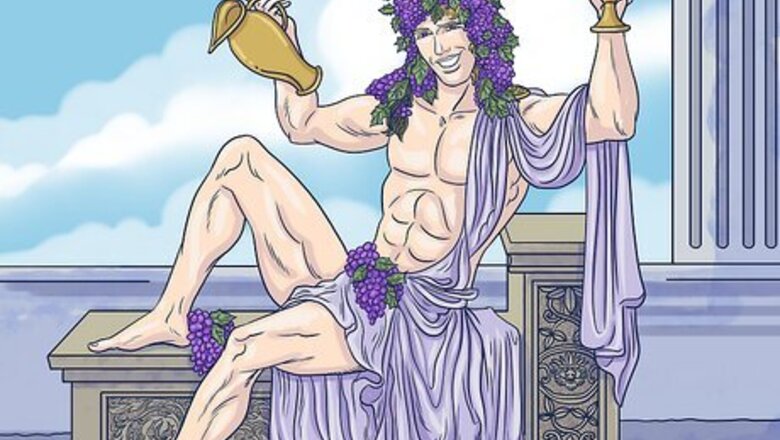
views
The Dual Personality of Dionysus

On the one hand, Dionysus was fun-loving and merry. There were two distinct sides to his personality, and the first side was playful, festive, and indulgent. Dionysus encouraged his followers to let loose and embrace the pleasures of life, which often meant throwing exuberant festivals and drinking copious amounts of wine. This was fitting, as Dionysus was thought to have invented the beverage himself! These traits have earned Dionysus the reputation of being a “party god,” but he certainly wasn’t this joyful and free-spirited all the time. He also had a pretty scary temper, which we’ll cover next.
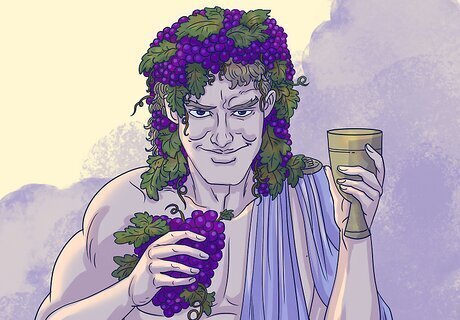
On the other hand, Dionysus could be terrifying and vengeful. Though Dionysus had the power to bestow ecstasy and revelry upon his followers, he also had the power to drive them mad with overindulgence. He was also known for being angry and temperamental, and he had no problem raining revenge down upon his enemies. Dionysus’s dual personality was thought to represent the different effects that alcohol can have on a person. Sometimes, alcohol causes joyful, exuberant feelings, but other times, it causes a dangerous loss of control and inhibition. Dionysus’s two-sidedness represents this juxtaposition.
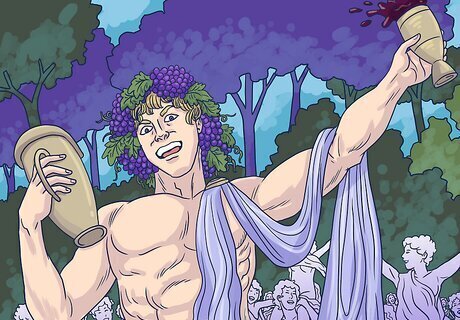
Dionysus was also known for being wild and unpredictable. Freedom-loving Dionysus had a chaotic, untamed energy. He did not settle down in one place, but instead wandered around the world, winning over new followers everywhere he went. These followers soon became a full-blown cult of Dionysus, and they often exhibited wild, frenzied behavior during their ritualistic worship sessions. In Rome (where Dionysus was called Bacchus), these rituals were called the Bacchanalia, and they occurred out in the woods and forests at night time. During these rituals, the maenads (female followers of Bacchus) would enter a state of delirium and ecstasy, dancing wildly and hunting down any animal they came across.
What did Dionysus rule over?
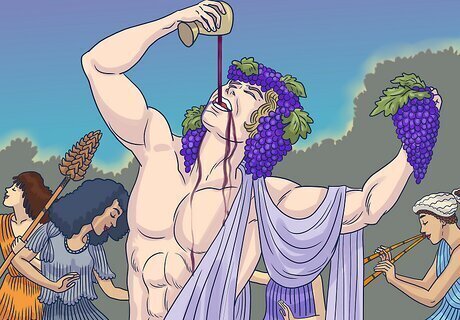
Dionysus was the god of wine, revelry and ecstasy. Dionysus was thought to be the inventor of wine, and he spread viticulture (the practice of cultivating and harvesting grapes for winemaking) throughout Greece. He was also associated with the beverage’s intoxicating effects, which were on full display at the festivals thrown in his honor. According to myths and legends, Dionysus was often accompanied by an entourage of female followers (maenads). At festivals and rituals, the maenads who would imbibe and indulge in wine until they reached an intense level of religious ecstasy.
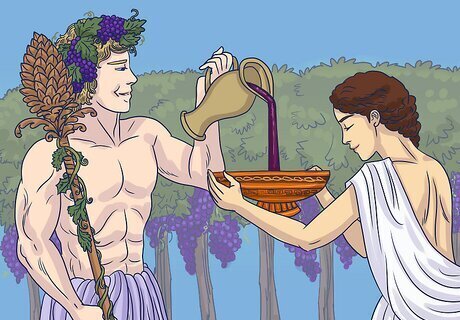
Dionysus was also considered a nature god. Along with being the god of wine and revelry, he was associated with fruitfulness, fertility, and the celebration of the grape harvest. Because of this, he is often depicted holding a staff wrapped in vines or ivy, topped with a pinecone. He is also shown wearing a crown of grapevines. The Ancient Greeks threw extravagant festivals to pay tribute to Dionysus. They believed that these festivals would promote fertility among the people and fruitful harvests of their crops. The most famous festival was called the Great Dionysia, and it was held in Athens at the start of each Spring.
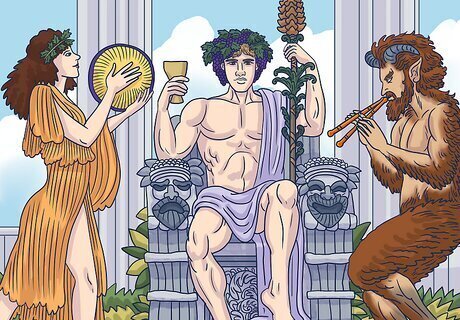
Dionysus later came to be known as the god of theater. At annual Dionysian festivals, followers would put on performances in his honor. Ancient Greek playwrights would present their works on these occasions, and the best actors would be awarded for their performances. It’s even believed that tragedy as a dramatic form originated with the Dionysian festival. As a result, Dionysus came to be seen as the god of theater and a patron of the arts.
Dionysus’s Physical Appearance
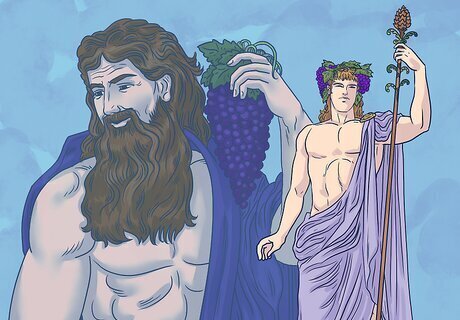
Physical depictions of Dionysus varied over time. Earlier depictions show him as an older, bearded man, often holding a staff topped with a pinecone. In later depictions, he was represented as a younger man with long flowing hair and no beard. These later renderings also represented Dionysus as more feminine or androgynous.
Dionysus’s Origins & Birth
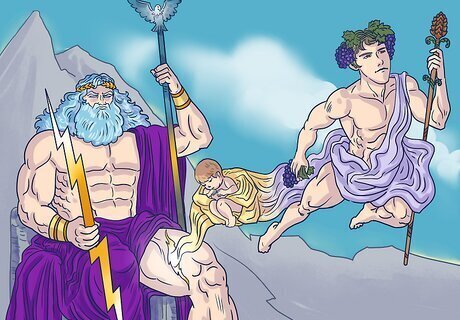
Dionysus was technically born twice. Dionysus was the son of the god Zeus and a mortal princess named Semele. When Zeus’s jealous wife Hera discovered his infidelity, she appeared to Semele in disguise and convinced her that she needed to see Zeus’s full god form to confirm his identity. Mortals, however, could not survive this sight, so Semele burst into ashes when Zeus granted her request. Zeus managed to rescue the unborn Dionysus from Semele’s womb and sewed him into his thigh, where Dionysus remained until he was ready to be born. As a result, Dionysus became known as the “twice-born god,” since he was born once from his mother’s womb, and a second time from his father’s thigh. To hide the infant Dionysus from Hera’s jealous wrath, Zeus sent him to be raised by mountain nymphs.
Famous Myths about Dionysus
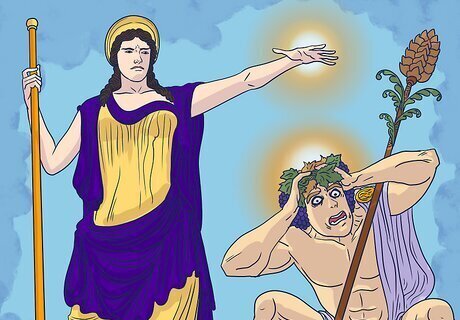
Once Dionysus reached adulthood, Hera cursed him with insanity. Still consumed with jealousy over Zeus’s infidelity, Hera decided to drive Dionysus (the product of Zeus’s adultery) mad. Consumed with his madness, Dionysus wandered aimlessly through Greece until he reached Phrygia, a kingdom in present-day Turkey. There he met the goddess Cybele, who ended up curing him.
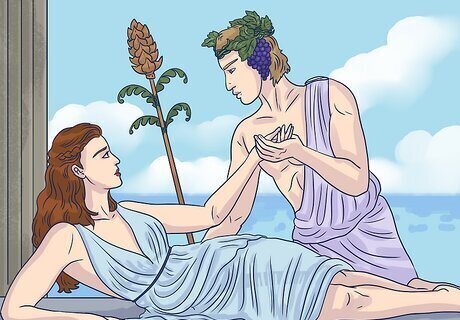
Dionysus married Ariadne after Theseus abandoned her. According to Greek mythology, Ariadne helped the hero Theseus escape the Labyrinth after he slayed the Minotaur. Ariadne had fallen in love with Theseus, but he abandoned her and left her to die on the island of Naxos. Dionysus then rescued Ariadne from the island, and the two eventually got married. They had three children, Oenopion, Staphylus, and Thoas.

Dionysus unleashed his vengeful side on the city of Thebes. Dionysus visited Thebes because he heard that its king refused to recognize Dionysus’s godhood. Once he was in the city, Dionysus started winning over several women to his cult of worshippers. He then approached King Pentheus in disguise and convinced him to spy on the women’s bacchanalian rituals. When the women spotted the king spying, a frenzied madness overcame them, and they tore him apart limb from limb. This story is the basis of The Bacchae, a play written by the ancient playwright Euripides in the late fifth century B.C.
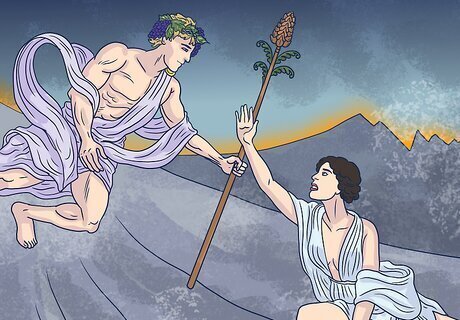
Dionysus visited the underworld to save his mother. It is believed that Dionysus traveled to the underworld to rescue his mother, Semele, after she died at the hands of Hera. According to legend, Dionysus was able to successfully retrieve Semele, which convinced many Olympians and humans that Dionysus was truly a god.


















Comments
0 comment